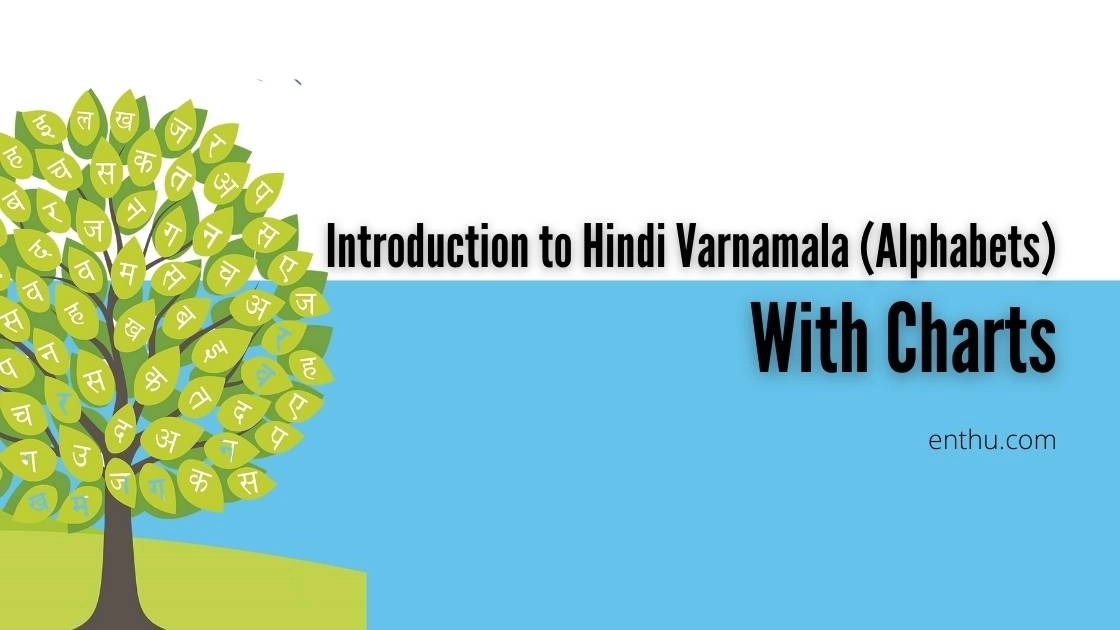Fun fact: did you know that almost 1.5 million Americans visit India every year? Unbelievable, right? But, it's true. Otherwise, where else would they find the exuberant blend of culture, history, gossip, entertainment, and such scenic beauty.
Let's not forget the once-upon-a-time America's most celebrated couple chose India for their wedding. Who am I talking about? Brad Pitt and Angelina Jolie, duh.
What I am trying to say is that a significant number of Americans learn Hindi every year, either to visit India as a tourist or to conduct business in India.
Not only Americans, in the age of globalization, people all over the world are investing time to learn foreign languages to keep up with the global community and to make communication better. Indeed, the world is full of surprises.
You never know when you will find a person in the farthest corner of the world speaking your native language, instantly making you feel at home.
Well, at least I was surprised when my American friend, Allyson Brown in Santa Clara, introduced herself in Hindi, that too in a clear and enviable accent. To be honest, I was shocked.
Apparently, it took her around 4 years to become fluent in Hindi. I still cannot forget how those simple words in a familiar language made me feel at home in a foreign country. This is the power and beauty of a language. It connects you to people.
It brings the world closer and makes you a part of the global community. But as sweet as it sounds, in reality, Americans find learning Hindi very challenging.
I have interviewed a dozen Americans, Europeans, and a few English speakers to find out the common difficulties they face. It shocked me to see that some of my interviewees were learning Arabic simulataneously.
Here's what they said. Let me take you through them one by one so that you learn Hindi faster than my friend Allyson.
Why is Hindi So Hard to Learn for Americans?
1. The Cross-Dressed Words
Hindi’s gendered words can be confusing your beard is masculine, tea is feminine, and the cup is masculine! 😄
👉 Learn more about non-living things and their genders in Grammatical Gender – Non-Living Things.
2. The Aspirated Consonants
First, let's deal with what is an aspirated sound? You call a sound aspirated when a forcible amount of air comes out of your mouth while pronouncing it.
For example, the sound h in "hat". What bothers my interviewees, the Hindi learners, is the jungle of aspirated and unaspirated sounds in Hindi. They simply can't differentiate.
To be honest, I also agree with them to some extent. After all, the sounds of क and ख do sound similar to foreign ears. If you listen carefully, ख is exactly like क. All you need to do is force out a mouthful of air while saying ka. In English, you can write it as 'Kha'.
3. Conjunct Consonants in Hindi
People who haven't heard about conjunct consonants might be scratching their heads now thinking what that is. Well, you can do whatever you want; just don't ask my interviewees because they think conjunct consonants are nothing but a pain in the neck.

Conjunct consonants form when two or three consonants are merged into one. For example: त + व = त्व tva, ण + ढ = ण्ढ ṇḍha स + थ = स्थ stha When a learner is struggling to learn simple alphabets, it's obviously not fair to give them two-tiered or three-tiered letters.
I agree with you, folks!
4. The Poles Apart Pronunciation
Most English speakers give up learning Hindi because the English and Hindi pronunciations are poles apart. So different that if English is north, Hindi would be south. Feel like I am exaggerating? Hold on; let me explain.
The Ranging "R"s in Hindi In Hindi, the "r" sound is distinct. On top of that, it has
In Hindi, the "r" sound is distinct. On top of that, it has two types of "r". One is "र'', and another is "ड़". The "र'' letter is pronounced by placing your tongue behind your teeth at the ridge. It's an alveolar trill/rolled R sound.
Most importantly, it's different from the English "R" sound in both the manner of articulation and pronunciation. To pronounce ड़, you need to curl your tongue backwards towards the hard palate at the back of your mouth.
It's a flapping sound, which means that you need to push your tongue forward to produce the sound. However, in English, we don't go as far back as the hard palate to pronounce R; instead, we articulate it between the ridge and the hard palate.
Generally, the R sound is pronounced by the tongue approaching but never touching the roof of the mouth. Again, in many words, the R goes completely silent, such as shark, fork, car, etc.
Although Americans are better than Brits in terms of pronouncing their Rs, they find it equally hard to pronounce the distinct R sound while speaking Hindi. For instance, the word standing in Hindi खड़ा है has a very different version of the R sound, which Americans find almost impossible to pronounce.
The Different Ds in Hindi In English, D is a
In English, D is a darling. It doesn't give a hard time to anybody as R does. In most words, the D pronunciation is kind of the same. Contrastingly, there are 4 letters that stand similar to D pronunciation in Hindi.
Why God, why? This drives American learners crazy! The letter are: ड, द, ध, ढ The majority of my interviewees find these letters very confusing. So, I am going to provide a brief explanation of how to differentiate these letters. Guys, this is for you all.
While pronouncing ड and ढ, you need to collide your tongue with the hard palate. ड is more like the D sound in words like dog, dumb, duck, slender, wonder, etc. ढ resembles the Dh sound in English, like dharma. (Please note, it's not used in English, so I can't provide an English word.) Next, let's talk about द and ध. While pronouncing these letters, you need to place the tip of the tongue at the root of the upper teeth.
द sounds like 'Th' in English, like this, that, other, nether, father. Go through these words to understand these sounds. The letter ध is not used in English commonly. But you can check out the end sound in Sindh to understand how ध sounds. I hope the above explanation clears your confusion a little. If not, comment below or hire a tutor.
The Terrible Ts in Hindi My interviewees also complained about the four T sounds in Hindi: त, ट, थ, ठ. My English speaking friends call these "the terrible Ts" to help them memorize better. To understand the
My interviewees also complained about the four T sounds in Hindi: त, ट, थ, ठ. My English speaking friends call these "the terrible Ts" to help them memorize better. To understand the त sound, just try saying John Travolta in an Italian accent.
Also, you can say Tacos as Spanish people do. There you have the first T sound. The ट sound is quite common in American English.
You have this T sound in words tomato, tiger, tarantula, etc. The letter "थ" also stands for "th" like Ds but in words like wrath, thin, bath, theorem, theory, thesis.
The ठ is quite similar to ट, except that while pronouncing it, you pull up your tongue really back and exhale air out of your mouth. Want to learn more about Hindi Alphabets? Read Introduction to Hindi Varnamala (Alphabets) to find out.

5. The Subject + Object + Verb Sentence Structure
In English, we write sentences in subject+ verb+ object structure. But in Hindi, the verbs come at the end of the sentence. This is another reason why Americans find Hindi sentences all jinxed up. For example, in English: Peter plays football.
But in Hindi, it's: पीटर फुटबॉल खेलता है Hindi, being an Indo-Aryan language, is a bit difficult to understand for people who speak in Indo-European languages. Apart from the difficulties in pronunciation, most Americans struggle with sentence forming and understanding the idea of conjunct consonants.

Also, the gendered nouns in Hindi confuse a lot of people. However, as I have seen from the interviews, it's definitely difficult to learn a foreign language from scratch, especially learning Hindi for an English speaker. But, if you have the will to learn and take it seriously you can obviously learn it.


Conclusion
Dear readers, yes, learning Hindi is difficult, but so is learning any new language. Although Hindi is hard, it's worth the time and patience. There are many reasons to love it. After all, who wouldn't like to enjoy a Bollywood 'masala' movie without using the subtitles? So, please don't give up because my interviewees didn't. They find Hindi hard, confusing, even mind-boggling, sometimes. But they are practicing every day. P.S. Shahrukh Khan is waiting for you!

FAQs
1. How long does it take to learn Hindi?
It varies from person to person and their social and cultural background. If you are an Indian, you might be familiar with the language, which will take you less time to learn. Whereas, if you are a foreigner, it will take almost 1200 hours or three years of extensive study and vocal practice to become fluent in Hindi.
2. How Long Does it Take to Learn Hindi?

3. Is Hindi hard to learn for foreigners?
It shouldn't be much difficult because Hindi is an Indo-European language, which makes it relatively easier to learn. Foreigners mostly struggle with the complexity of gendered pronouns or conjunct consonants.
4. However, regular practice can make it easy. Is Hindi a dying language?
No, Hindi is not a dying language. In India, Hindi is the most popular regional language consisting of 42% of the population. Also, Hindi is the fourth most spoken language in the world.
5. Is Hindi spoken in the USA?
Yes, Hindi is the 11th most popular language in America, consisting of roughly 6.5 lakh speakers and the most spoken Indian language in the U.S.




.png)
.png)
Comments